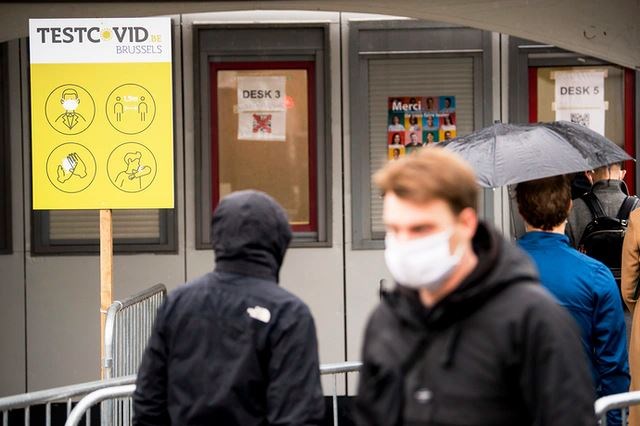Belgium's temporary new testing strategy, in which people without Covid-19 symptoms will no longer be tested, starts today and will last until at least 15 November.
As test material in Belgium is becoming scarce and to reduce too-long lines at testing centres and take some of the pressure off of laboratories, the authorities made some changes to the guidelines.
Up until now, Covid-19 tests were intended for people who showed symptoms of being infected with the coronavirus, and for people who had a so-called high-risk contact.
High-risk contacts are people who have been in close contact with a person who tested positive for Covid-19, or people who have returned from a red travel zone. People in one of these categories could always be tested, even if they did not show any symptoms.
However, that changes from today.
Who can still get tested?
From now on, only people with Covid-19 symptoms, groups in which an outbreak has occurred (such as sports clubs), and people who are admitted to hospital to residential care centres will be tested.
In groups and associations such as sports clubs or care centres, the virus can easily spread because people are together for a long time and often have close contacts. That is why, in the event of an infection, it is important that everyone is tested.
In hospitals and residential care centres, everyone who is admitted is tested preventively, to protect the vulnerable people who already inside.
Related News
- Brussels' new Covid-19 testing village to open on Thursday
- Belgium will stop testing people without Covid-19 symptoms
- Asymptomatic cases' only option is quarantine, former Sciensano official says
What if you test positive?
People who test positive for the coronavirus have to isolate, for a period of at least seven days. The quarantine period ends when you have been fever-free for at least three days, and any respiratory problems have disappeared.
The quarantine always had to last a minimum of seven days. This means that if you are fever-free on the fifth day, for example, you will only be allowed out of quarantine after eight days.
What are the quarantine rules for people who cannot get tested?
People who have had a high-risk contact, or have returned from a red travel zone but do not show any symptoms, will no longer be tested. However, they still have to quarantine, for ten days instead of the previous seven. The quarantine starts on the last day the contact with an infected person happened.
Previously, quarantined people could get tested on day 5. If the result was negative, they were allowed to leave their quarantine after the seventh day.
That test is now no longer possible. After the 10-day quarantine period, people still have to be vigilant for another four days. Among other things, this means being extra careful with keeping social distance and coming into contact with others.
What if you need a test to travel?
People who need to show a negative test result before travelling abroad can still get tested, but at their own expense.
Maïthé Chini
The Brussels Times

